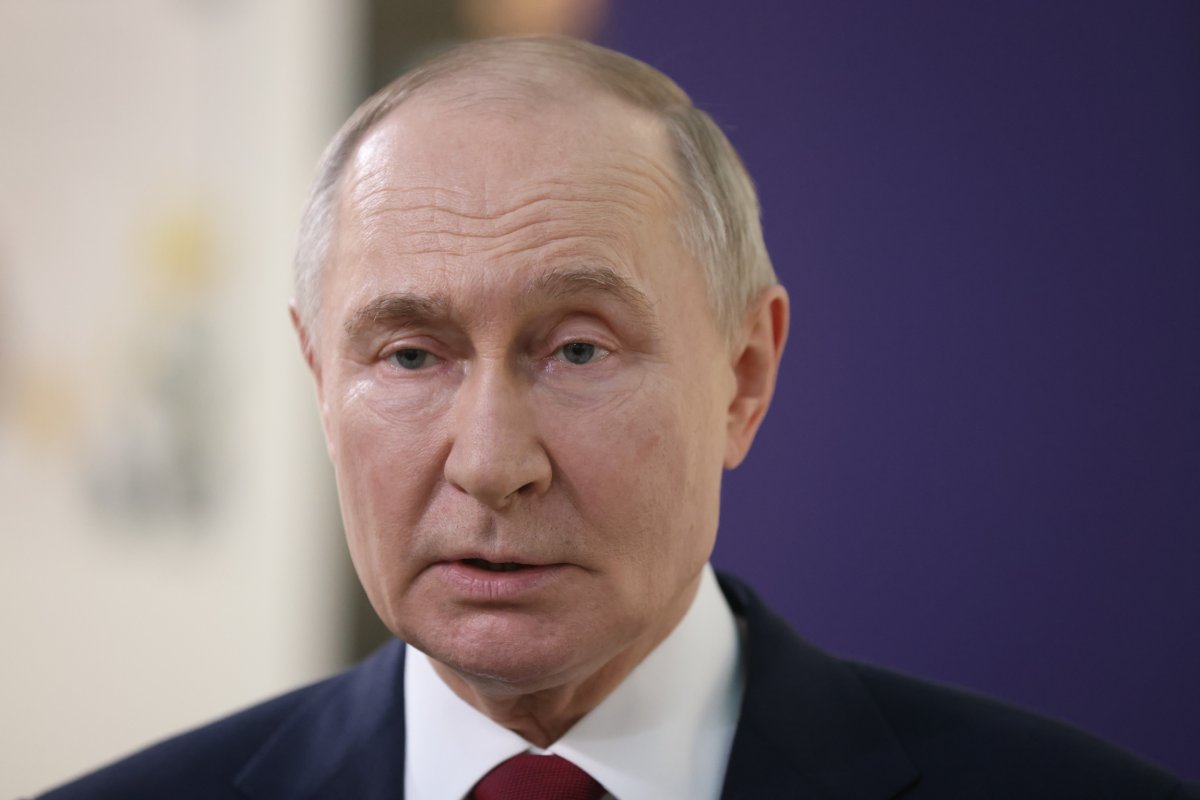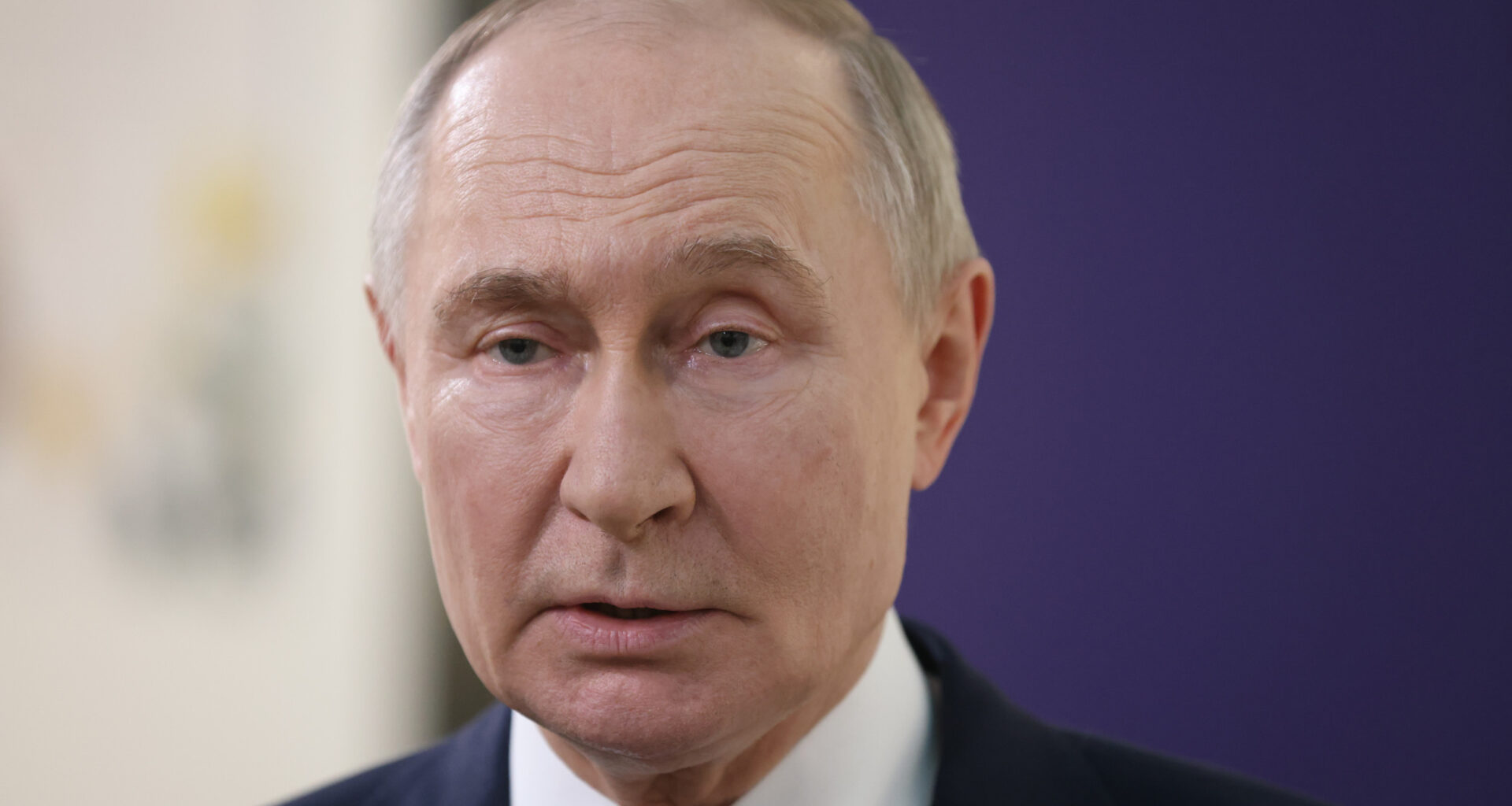Russia is adding nuclear-tipped air-to-air missiles to its weapons inventory, according to the Pentagon‘s Defense Intelligence Agency (DIA).
The new missile is reminiscent of weapons used by the Soviet Union during the Cold War, with the latest version designed to be used by Russia’s MiG and Sukhoi fighter jets.
Newsweek has contacted the Kremlin for comment by email.
Why It Matters
The development comes as tensions between Russia and the West are at their highest level since the Cold War as a result of President Vladimir Putin‘s decision to launch a full-scale invasion of Ukraine in February 2022.
The War Zone, an online military magazine, notes that while nuclear-armed air-to-air missiles were part of the Soviet Union’s arsenal during the Cold War, little is known about their current status within Russia’s Aerospace Forces (VKS), which “makes the disclosure from [the Defense Intelligence Agency] intelligence all the more intriguing.”

Russian President Vladimir Putin is seen in Sirius, Russia, on May 19, 2025.
Russian President Vladimir Putin is seen in Sirius, Russia, on May 19, 2025.
Contributor/Getty Images
What To Know
Hans Kristensen, the director of the Nuclear Information Project at the Federation of American Scientists (FAS) think tank, said on X (formerly Twitter) that he’d heard rumors for years that Russia was redeploying nuclear-tipped air-to-air missiles, but the “weapon was mysteriously not included in DOD pubs since 2018.”
The DIA’s 2025 Worldwide Threat Assessment, published on May 11 said Russia is “expanding its nuclear forces by adding new capabilities, including nuclear air-to-air missiles and novel nuclear systems.”
Nuclear-armed air-to-air missiles were originally intended for use against formations of bombers during the Cold War. Such formations are not as relevant now “but not having to get within the blast-fragmentation range of a missile warhead to take down a target could be seen as advantageous in the modern era, possibly against stealthy aircraft that can be detected but are hard to lock up, especially by a small radar on a missile during its terminal attack phase,” according to The War Zone.
Another possibility is that nuclear-armed air-to-air missiles could be used to counter swarms of drones or waves of cruise missiles.
Russia maintains a nuclear stockpile of about 1,550 deployed strategic warheads and up to 2,000 non-strategic warheads, the assessment said.
Russia is expanding its nuclear posture to its neighbor and ally Belarus by establishing missile and nuclear-capable aircraft capabilities, renovating a nuclear weapons storage site, and training Belarusian crews to handle tactical nuclear weapons, the DIA said.
“Throughout the Russia-Ukraine conflict, Russia has used nuclearrelated rhetoric and military exercises to signal its resolve and deter Russia-perceived Western involvement in the conflict,” it added.
Russia has ramped up its nuclear threats throughout the war, with the most recent warning coming from Sergei Shoigu, secretary of Russia’s Security Council, in April.
Russia reserves the right to use nuclear weapons if it faces aggression from Western nations, he told Kremlin newswire Tass.
Shoigu, who was replaced as defense minister in 2024 after holding the position for 12 years, cited amendments made to Russia’s nuclear doctrine in November.
He said it allows Russia to “use nuclear weapons in the event of aggression against it or the Republic of Belarus, including with the use of conventional weapons.”
“In the event of foreign states committing unfriendly actions that pose a threat to the sovereignty and territory integrity of the Russian Federation, our country considers it legitimate to take symmetric and asymmetric measures necessary to suppress such actions and prevent their recurrence,” Shoigu warned.
The DIA report said, however, that Russia is very unlikely to use nuclear weapons in the Ukraine war “unless Russian leadership judged it faced an existential threat to the regime.”
What People Are Saying
Russian President Vladimir Putin said in December that the Kremlin reserves the right to use nuclear weapons against any country that poses a threat to Russia or Belarus.
“When we are talking about certain military dangers that can develop into new threats, we are talking about increasing the responsibility of non-nuclear states that can participate in aggression against Russia, alongside nuclear-capable countries,” he said.
“And if such countries pose a threat to us, we reserve the right to use our nuclear weapons against them.
“We have announced that if the same threats are made against our ally, Belarus, we will do everything to ensure the security of Belarus. And I think this is a very important component of the updated nuclear doctrine.”
What Happens Next
Developments suggest Moscow could be gearing up for a potential face off with NATO. Russia is expanding its troop presence along stretches of its western border, ramping up its military spending at a record pace and intensifying covert operations against the West.
Meanwhile, intelligence and military officials have warned that NATO member states must be ready for a potential conflict with Russia.
